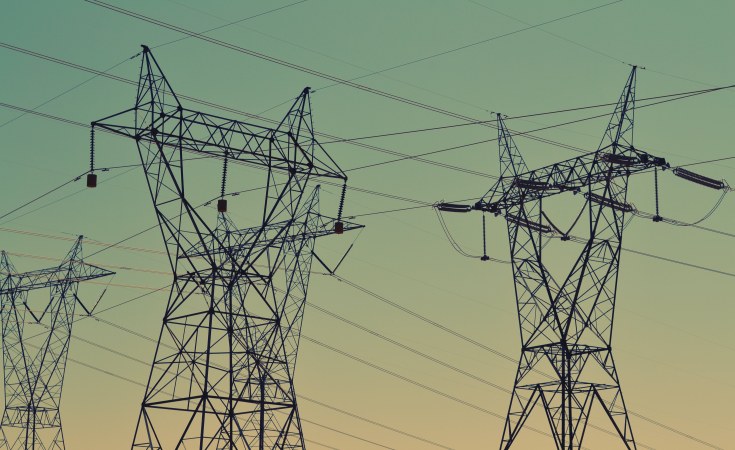Abuja — Roughly 80 per cent of people who have no access to electricity globally live in Nigeria and other countries in sub-Saharan Africa despite a decline of the number by more than 10 million, a new report has said.
The International Energy Agency (IEA) in its latest 'Country Data on Electricity Access,' however noted that the figure of persons who do not have power supply has slumped from over 760 million to below 750 million in the last one year.
Created in 1974, the IEA monitors energy markets and provides analysis, data, and policy recommendations to its 31 member countries and 13 association countries.
However, despite the large number of persons who do not have electricity, the report stated that data for 2024 suggest that improvements are set to continue this year, as the number of people without access to electricity is expected to decline by as much as 10 million again.
Nigeria faces persistent inadequate power supply, with about 5,000mw available, despite a demand of 20,000mw. Aside transmission infrastructure constraints, the sector is beset with distribution network inefficiencies.
Others include: Metering issues, with over an estimated half of customers unmetered, funding constraints, estimated at $10 billion annual investment deficit, corruption and inefficiency in the sector, gas supply shortages for power plants as well as aging infrastructure.
But the global improvements remain well below pre-2020 levels, the IEA said, recalling that between 2015 and 2019, the population without access decreased each year by 80 million on average.
According to the report, around 80 per cent of the countries without universal access today it is still slower than in the late 2010s, with current improvement rates far below what is necessary to reach the target of universal electricity access by 2030.
It stated that this requires the population without access to decrease on average ten times faster than today.
While most of developing Asia and Latin America get closer to universal electricity access, with more than half a billion people gaining access in the past decade, it said major gaps persist in sub-Saharan Africa, where 80 per cent of people without access live.
"The most severe gap persists in sub-Saharan Africa, where 80 per cent of the global population without electricity access live. After three years of backsliding, progress resumed in 2023, driven by an acceleration in grid connections, continued growth in solar-home systems deployment, and, to a lesser extent, new mini grids development.
"Six hundred million sub-Saharan Africans still lacked access to electricity, a number higher than in 2019. Even with continued progress in 2024 as suggested by preliminary reporting, the number of people without access to electricity in the region will still be slightly higher than in 2019 by the end of this year.
"New annual connections in sub-Saharan Africa have rebounded. Decentralised access solutions now serve 7 per cent of the region's population. The number of new annual electricity connections in sub-Saharan Africa reached more than 6.5 million in 2023, an increase of 60 per cent since the 2021 dip and just shy of the around 7 million connected in 2019.
"Countries with a strong history of expanding electricity access are contributing the most to the recovery, with significant single-year improvements in grid connections driving the rebound in countries like Ghana, Nigeria, and Uganda," the report added.
The number of new grid connections in Nigeria and the other three countries, it said, has more than doubled since the 2020-2022 dip, reaching or even surpassing pre-crisis levels.
Most countries, however, are still lagging below their historical progress levels, with more than 40 per cent of the population in sub-Saharan Africa connected to the main grid and mini-grids providing access to more than 4 million additional households, it said.
The IEA stressed that market for mini-grids had been growing in recent years as more countries institute regulatory frameworks to facilitate the financing and implementation of these projects.
"Around 27 million people were connected to a mini-grid in sub-Saharan Africa in 2021. Countries such as Nigeria and Uganda have seen an acceleration in the number of mini-grid licenses that have been permitted and registered, and in the number of customers connected to mini-grids.
"Based on planned projects and permits in the region we estimate this trend to continue to accelerate ... to 3 per cent of the population.
"While there was a slight decrease in sales in more established markets in eastern Africa, these were outweighed by continued growth in west African markets, driven by Nigeria, and record sales in southern Africa," the document explained.
But despite the promising trends, more financial commitments, it said, are necessary to accelerate progress on global energy access
"Progress remains far behind the levels required in most countries to reach universal access by 2030, and without further action around 645 million people will still lack access globally by the end of the decade.
"New measures and innovations have recently improved the long-term outlook compared to previous years, with around one-third of the population without access living in a country that recently implemented a positive change in their electricity access paradigm.
"Still, challenges remain, including limited access to affordable commercial finance, difficulties in disbursing funds for 'smaller' projects, growing debt burdens, and competing demands on overseas development assistance budgets," the IEA report pointed out.


